Balancing The Scales: WildHub Special - Event Recap

On July 9th, we hosted a screening of the Beaver Trust's new documentary Balancing The Scales, followed by a Q&A session with Elliot McCandless from Beaver Trust, Angelika von Heimendahl from the Wildlife Trusts and Andy Thomas from Wild Trout Trust.
As Elliot explained, the idea for this documentary came about in 2022 to shine a light on some of the science that was being conducted on beavers and salmonids interactions and bring that to life through a short film. Funded by The European Nature Trust, produced and directed by Nina Constable, and beautifully narrated by Dame Joanna Lumley, the film is the first in Britain to explore the intricate relationship between reintroduced beavers and the delicate conservation needs of migratory fish populations. Among those featured in the documentary are Dr Rob Needham, Beaver Trust's Restoration Manager, and Shaun Leonard, Director of Wild Trout Trust.
By exploring the latest research in Britain and learning from on-the-ground experiences in countries like Norway and North America - both nations with notable beaver populations and long histories of managing fish migrations - the film helps us understand how we can move beyond conflicts and work towards healthier, more resilient ecosystems together.
Balancing The Scales is both beautiful and heartfelt. It makes many excellent points about the poor state of our freshwater environment and the urgency of its biodiversity crisis.
The rivers of the UK are physically damaged. They're, you could say, broken and they have been so for more than a thousand years. So we've got an awful lot of work to try and undo that physical harm. Straightened and dredged ditch-like rivers are not good places for wildlife. They don't function naturally and they are not good for the trout or indeed any of the other wildlife that live in or around them. - Shaun Leonard, Wild Trout Trust
Today, over one third of our fish species are listed as endangered. The Atlantic salmon, once abundant in British waters, was declared endangered in 2023 - a symbol of the devastating decline British fish are suffering.
Our salmon populations are in absolute crisis at the moment. In the last 20 years they've declined by 70% and at the current rate of decline we could lose them completely within 20 years. [...] If salmon were lost, from a biological or ecological perspective, it would be horrendous. But also, from a cultural perspective, this is an iconic species that plays a part in many people's lives and has done for thousands of years. - Chris Conroy, Fish Biologist
The health of our freshwater habitats is crucial to the long-term survival of all species. Yet today, freshwater stands as one of the most threatened ecosystems on Earth. Research increasingly shows that we must look at an ecosystem level to restore freshwater environments - through holistic, landscape-scale restoration. With their unique ability to build and engineer, beavers can play a key role in regenerating freshwater ecosystems. And following their reintroduction, their population in Britain is slowly rising.
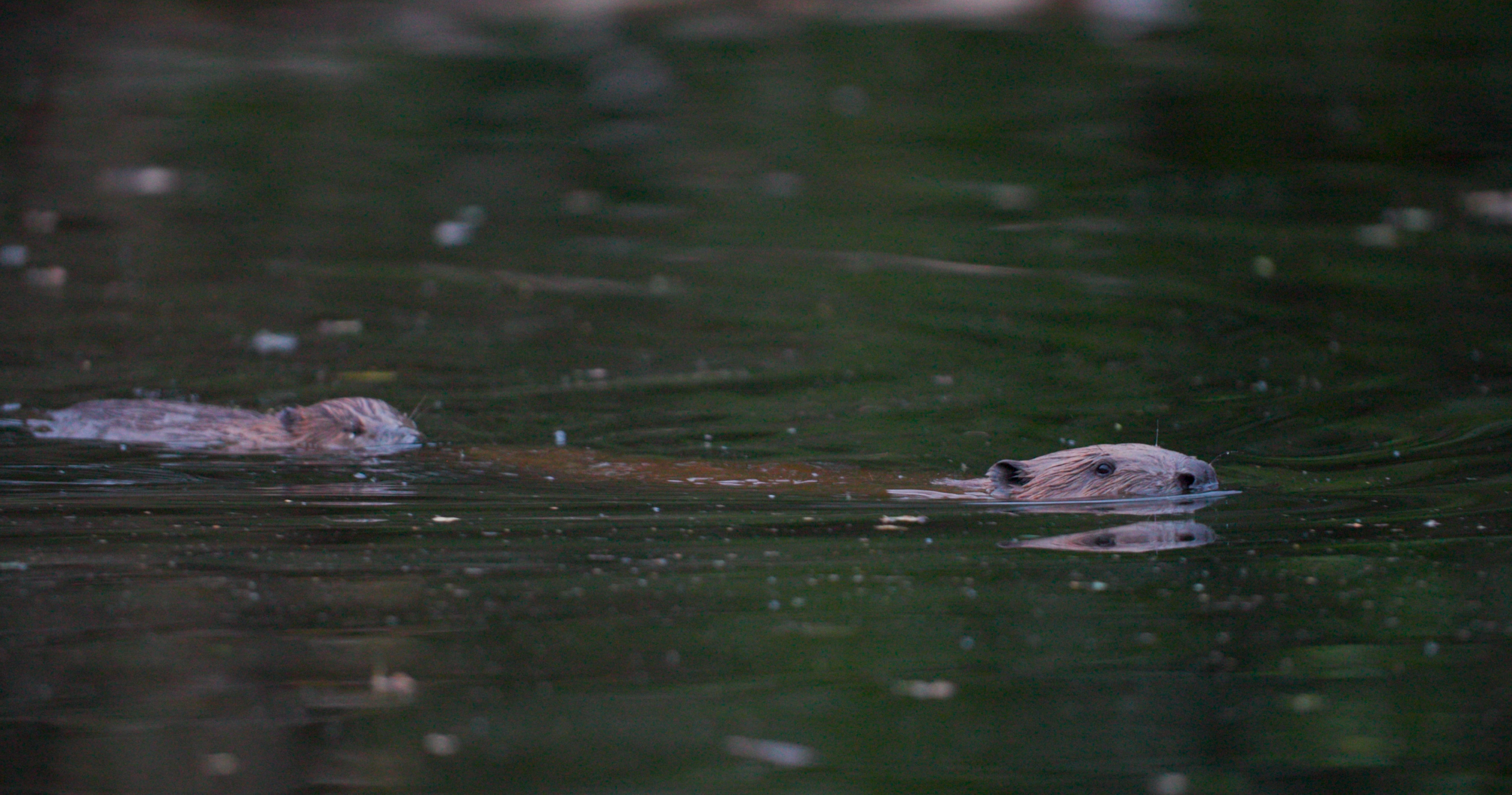 ©Beaver Trust
©Beaver Trust
Once native to Britain, beavers evolved alongside fish species, thriving for millennia, until they were hunted to extinction over 400 years ago. Since their disappearance, we have witnessed widespread habitat destruction and biodiversity loss. By felling trees and building dams, beavers create habitat, boost biodiversity, and provide vital food for many species. However, their reintroduction to Britain comes at a time when migratory fish are in a perilous state, and to some, the dams beavers build represent an impossible physical barrier to migrating fish.
The problem in our country with man-made structures - weirs, dams - is that we see many problems for fish moving around easily. One of my concerns is that widespread beaver introduction, certainly to the headwater streams, might exacerbate those problems for our native fish communities. - Shaun Leonard, Wild Trout Trust
Beavers in the right place can have a really positive impact, but if they're in the wrong place, they can potentially have a negative impact on our freshwater fish populations. [...] Although they are both really important parts of the natural ecosystem, we don't really want to have one lost at the benefit of another. There needs to be that balance. - Chris Conroy, Fish Biologist
The natural world exists in a delicate balance. As beavers return and bring changes with them, we need to understand how this might impact our struggling fish populations. At a release site in Scotland, Dr Rob Needham conducted a long-term scientific study to explore and answer some of the questions surrounding fish and beaver interactions.
The major interest with working with beavers is the habitat modifications which they do. They build dams, they build canals, they change habitats. Partly my main interest was to see how other species, other taxonomic groups, react to these changes in the environment. [...] You might look at a dam in the middle of summer and go "Oh my goodness that's a complete barrier". But if these dams are given time to establish then we're going to see the fish ability to get around these natural structures. - Dr Rob Needham, Beaver Trust
The impact of beavers, witnessed by Dr Rob Needham and his team, transcends British waterways. The increased water retention from beaver dams could be crucial in maintaining habitat for young fish during dry periods. By reintroducing deadwood into the ecosystem, beavers create environments where invertebrates flourish, providing an essential food source for juvenile fish and offering refuge during times of environmental pressure. Much of the groundbreaking data gathered from Dr Needham's study site is new information for Britain, but knowledge gaps remain particularly regarding beavers and Atlantic salmon.
Perspectives and case studies from Norway and North America provide invaluable context for Britain, offering guidance to its conservation approach. A study conducted by Dr Rachel Mallison, Assistant Research Professor at the University of Montana, on the ecology of juvenile salmon in Norway (focusing on habitat use, food availability, and movement) found that dams do not block fish movement.
The juvenile fish are able to move upstream and downstream of the dams and they're present above and below the dams. But the dams did modify how the fish moved. The biggest difference was that there were just less repeated upstream and downstream movements in the sites with beaver dams compared to control sites.
I think it's important not to just paint it in a completely positive happy light though and say that there will be no challenges because that's not the case. The system will change, things will be different; but from an ecological perspective, the overall benefit to the system should be positive. - Dr Rachel Mallison, UM
Beavers and salmonids have co-evolved and coexisted for millennia. If we have the chance to let beavers return and benefit from the ecosystem services they provide, we should take it. Humans can hardly mimic what nature does, and allowing nature to take the lead can yield faster, more enduring results - particularly when it comes to restoring rivers and declining fish populations. Nature has incredible resilience and the power to recover when given the opportunity. But to move forward, we need to come together, combining our knowledge and experience to restore balance in the natural world.
It's important that we can demonstrate to stakeholders and landowners that there are tried and tested management and mitigation methods that have been conducted in North America and Europe. So there are solutions to problems which might arise. It's just we need to decide, are we willing to share our landscape with this species? - Dr Rob Needham, Beaver Trust
At a time when our migratory fish are under threat, there is an urgent need to act - and beavers could play a significant role. There is hope for our rivers and fish!
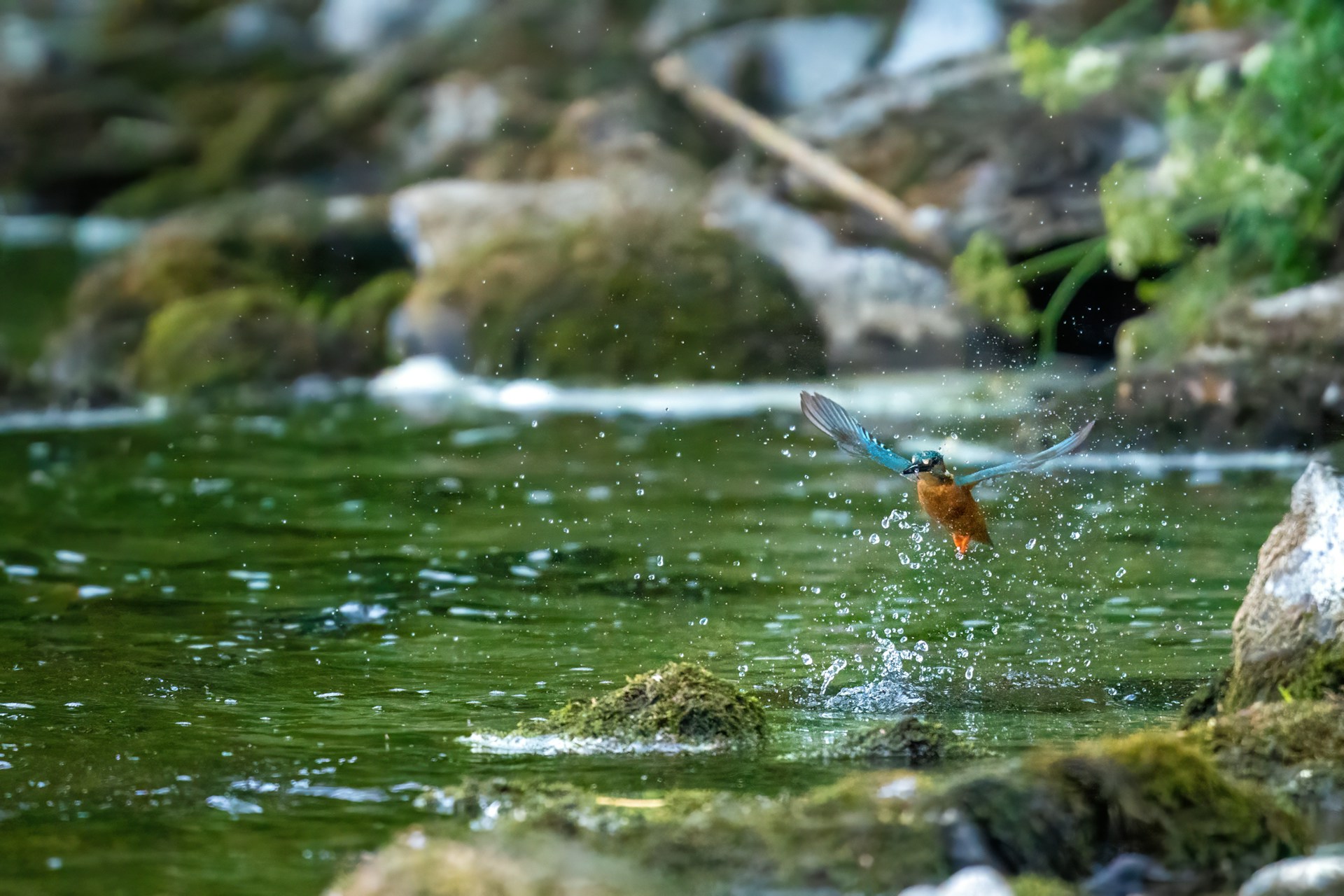
❓🗣️ Themes Explored in the Q&A session 💬💡
Balancing Beaver Reintroduction With Fish Conservation
-
Panelists emphasised how beaver reintroduction can enrich river ecosystems by creating pools, wetlands, and increased habitat complexity - benefiting biodiversity.
-
However, they also highlighted the potential risks for migratory species, such as Atlantic salmon and brown trout, whose passage may be hindered by beaver dams.
Dr Rob Needham’s Research
Dr Needham focuses on interactions between brown trout and Eurasian beavers, particularly the effects of beaver dam activity on fish populations. Ongoing research in Scotland and England aims to replicate and expand these findings.
B-DAMS Management Framework
The Beaver Dam Assessment Methodology for Salmonids (B-DAMS) is being developed as a practical, site-specific tool for assessing the impact of beaver dams on fish passage. Designed to be user-friendly, it allows anyone to assess whether a dam hinders fish migration at a given time. It is currently under review by Natural England and the EA Fish Pass Panel, with public release planned later this year.
Tay Catchment (Scotland) Case Study
Research in the Tay catchment, which has a large and genetically diverse beaver population, found no negative impact on the distribution of Atlantic salmon or trout, and a positive co-occurrence with eels. These findings suggest that, at a catchment scale, beaver presence does not necessarily harm migratory fish populations.
Behavioural Adaptation in Fish
Studies show that brown trout can learn to pass beaver dams, with passage times decreasing after initial attempts. The most motivated fish are able to navigate multiple dams, even under low-flow conditions.
Kent and Loch Ness/Loch Latch Case Studies
In Kent, beavers have not built dams due to local conditions, so fish passage has not been affected. In Loch Latch, brown trout populations have thrived despite being isolated from migration for over 10,000 years, demonstrating the adaptability of some fish species.
Management Interventions
Effective management can include simple measures like “notching” beaver dams to facilitate fish passage. Local training and rapid response teams (e.g., Wildlife Trust volunteers) are being implemented to address issues as they arise.
Site-Specific and Flexible Approaches
The impact of beaver dams is highly site-specific, and a “one-size-fits-all” approach is not appropriate. Management frameworks should allow for timely interventions, particularly in sensitive systems such as lowland or chalk streams.
Ongoing Research and Knowledge Gaps
Continued research is needed to address knowledge gaps, particularly in systems where data is lacking. Collaboration between researchers, conservation organisations, and local stakeholders is essential.
In summary:
A balanced management framework should be informed by site-specific research, practical case studies, and flexible, responsive tools like the B-DAMS framework. It should also prioritize ongoing research, local training, and stakeholder collaboration to adapt to new findings and changing conditions.
🌱 Takeaways
-
Synergy over conflict: Beaver restoration and fish conservation can be complementary, if thoughtfully managed and context-sensitive.
-
Knowledge gaps remain: More long-term, UK‑specific research on fish movement through beaver habitats is needed.
-
Collaborative solutions: Effective outcomes depend on stakeholder collaboration, from policymakers to landowners to local communities.
-
Restoration as resilience: Healthy, reconnected river systems support biodiversity and climate adaptation alike.
__________________________________________________________________________
🔍 Useful resources
1. Pages below on beaver biology, impacts, and a dedicated page on beavers and fish👇
https://beavertrust.org/
https://beavertrust.org/
https://beavertrust.org/
https://beavertrust.org/our-
2. eDNA sampling reveals no negative effects of beaver recolonisation on the catchment-scale distribution of migratory fish
“we found no effects of the current beaver presence on the distribution of Atlantic salmon or lamprey, but a positive co-occurrence with European eel at the catchment scale.👇
https://www.biorxiv.org/
3. The response of a brown trout (Salmo trutta) population to reintroduced Eurasian beaver (Castor fiber) habitat modification.
“Beavers had profound effects on the local brown trout population that promoted higher abundances of larger size classes.”👇
https://eprints.soton.ac.uk/
4. The impact of reintroduced Eurasian beaver (Castor fiber) dams on the upstream movement of brown trout (Salmo trutta) in upland areas of Great Britain.
“Our findings indicate that given the right environmental and biotic factors, brown trout are adept at passing beaver dams”👇
https://journals.plos.org/
5. Eurasian Beaver (Castor Fiber) Reintroduction: A Nutrient Mitigation Solution for Lowland Chalk Streams?
6. Guidance: Beavers, managing beaver activities in England
https://www.gov.uk/guidance/beavers-managing-beaver-activities-in-england
7. Unravelling perceptions of Eurasian beaver reintroduction in Great Britain.
https://www.martinezbeavers.org/wp-content/uploads/2019/09/area.12576.pdf
8. Links to Beaver Trust's short documentaries:
On The Edge 👉 https://www.youtube.
Beavers Without Borders 👉 https://www.youtube.
9. Beaver Trust's very own podcast series, The Lodgecast 👉 https://beavertrust.org/our-work/communications/the-lodgecast/
It features fabulous guests discussing topics ranging from nature prescriptions, beavers, river health, environmental policy to climate, eco anxiety and much more!

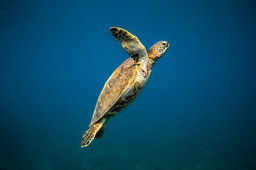
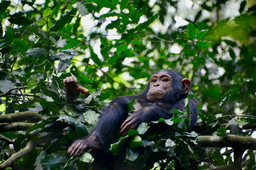
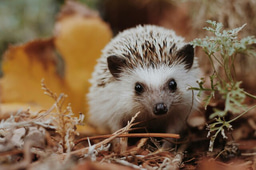

Please sign in or register for FREE
If you are a registered user on WildHub, please sign in
@Elis Martinelli as I think you were interested in this!
Thank you Liane!
Wonderful to see this summary of this WildHub Special event, Flavia! thanks again for organising and for sharing this with our community so that other members, who couldn't attend, can benefit from these insights and lessons learned!
It was a pleasure to organise the event, and happy to share the key takeaways with the wider WildHub community. Looking forward to more insightful events!
Thanks so much for providing a detailed summary! Fascinating and inspires a desire to look further into it.
Really appreciate that - thank you @Lara Reden! It’s a fascinating topic, and there’s certainly a lot more to uncover. 🦫🔁🌿